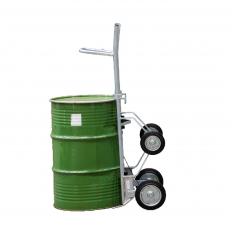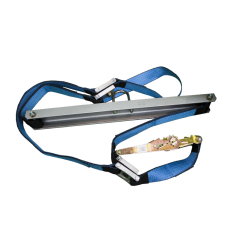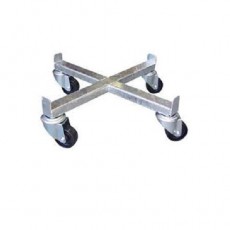Before using any Drum handling equipment or Lifting Clamps be sure to read the instruction manual
Checking loads before use
• Ascertain the weight of a load and its centre of gravity.
• When lifting a load longer than 1m, calculate the centre of gravity in the lateral (side to side) direction.
• Ensure the load is free of oil and water.
Use clamps suitable for the lift
• Select clamps according to the mechanism and capacity necessary for the lift.
• Use clamps within the specified capacity (maximum working load, opening size and material hardness).
• Do not lift loads that have a thickness less than 1/4 of the maximum clamp opening size.
• Match the clamp working load capacity to the weight of the load. A load should weigh at least 1/5 of the working load weight of the clamp.
• When lifting loads where the surface is slippery (e.g oil, water etc.), remove the oil first and ensure that the clamp teeth are in good condition.
• Select the appropriate clamp.
• When lifting diagonal materials, use a model SBB clamp and refer to the instructional manual for the correct lifting procedure.
• When lifting long materials vertically (more than 10 times in length/width), use the model SBB Clamp and refer to the instructional manual for the correct lifting procedure.
• Do not use clamps instead of hooks.
• Never use clamps that have been hit hard or had impact type loads placed on them.
Precautions when attaching clamps
• Determine the position to attach clamps so that the safety lock lever (or clutch) does not touch the wire, chain, lifting shackle, or other objects when lifting or lowering.
• Ensure clamps are attached at a position higher than the centre of gravity of the object.
• Make sure the clamps are set close together on the load.
• Make sure that the safety lock (latch or lever) has been set securely.
• Always determine positions for attachment taking into account where the load will be set down.
General precautions
• Do not clamp steel plates from the side if they are to be raised vertically.
• When using many points for lifting, pay attention to unbalanced loads.
• When lifting heavy or long objects (more than 1m), ensure the lift is completed with 2 to 4 lifting clamps.
• Use only certified lifting wires and chains.
• Before lifting check for twists and kinks.
• Use clamps with the correct orientation.
• Do not lift several different objects using separate clamps suspended from one hook.
• Do not lift more than one steel plate with one clamp.



